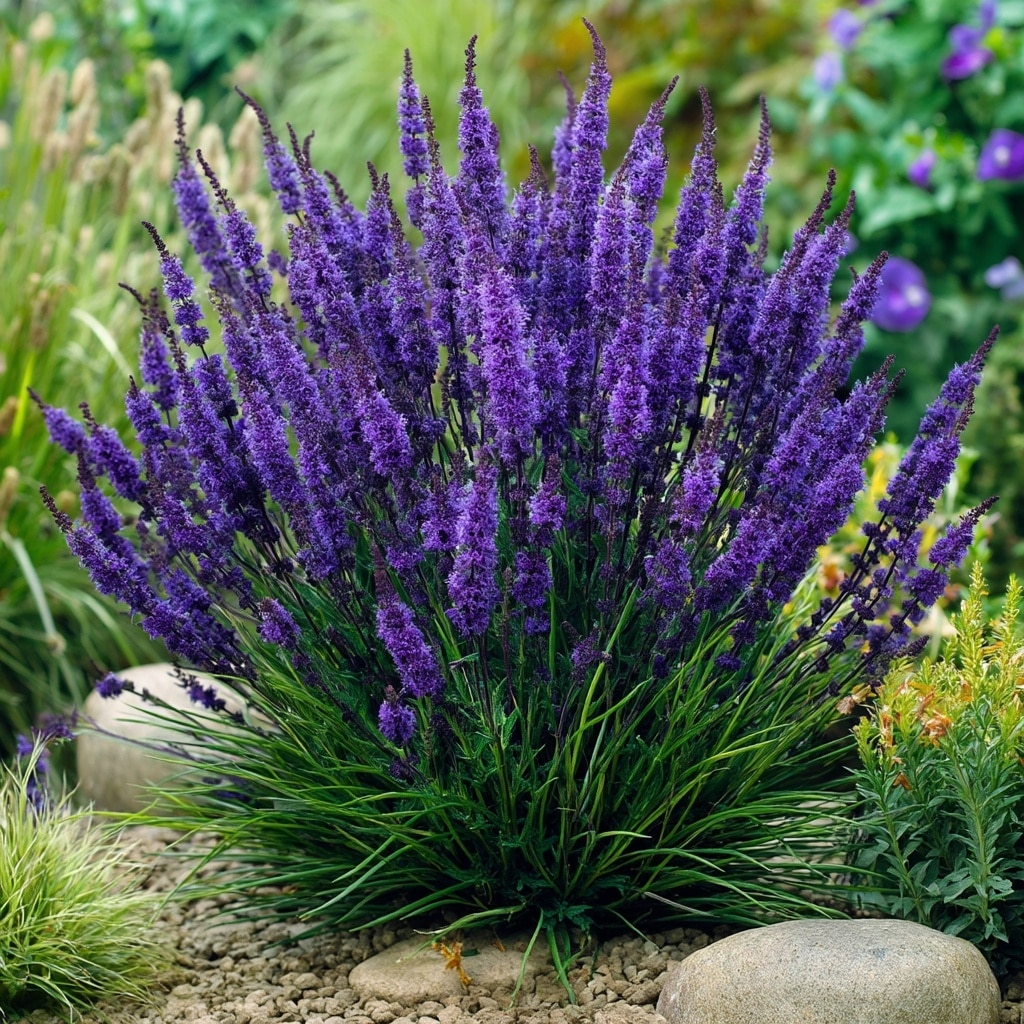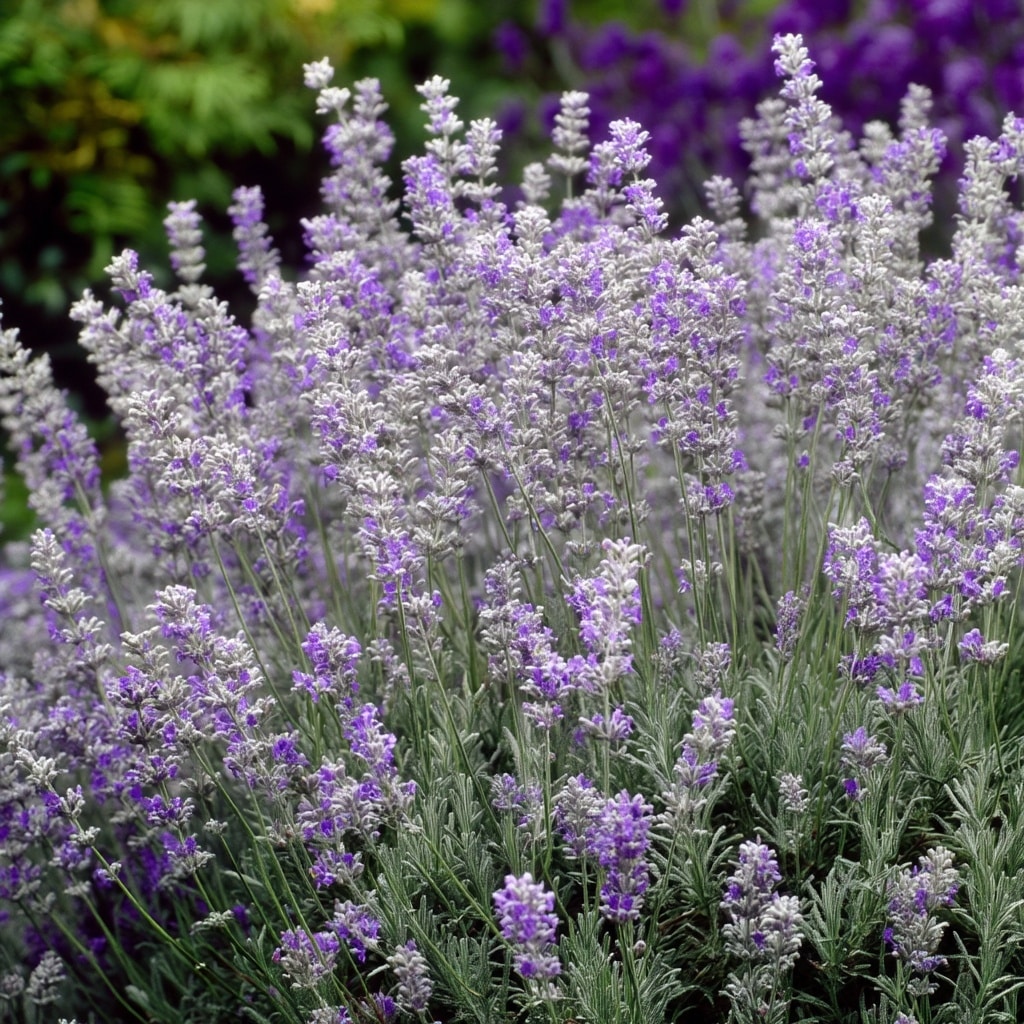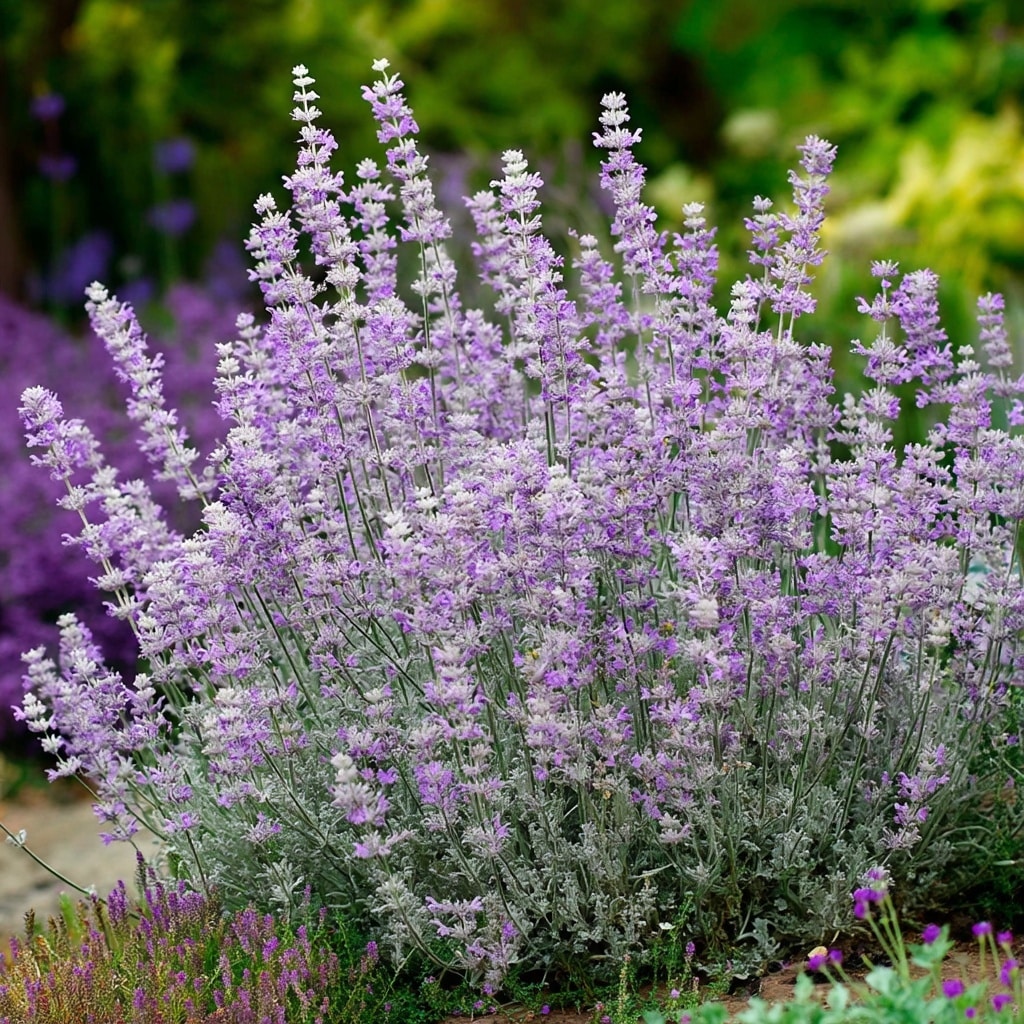Lavender is more than just a pretty flower—it’s a fragrant staple in gardens around the world. Known for its calming aroma and beautiful purple blooms, lavender brings both elegance and tranquility to any outdoor space. Whether you’re looking to create a sensory escape, attract pollinators like bees and butterflies, or simply grow a hardy perennial that thrives with minimal care, lavender checks every box.
Gardeners in temperate zones especially love it for its drought resistance, versatility, and long bloom time. But with so many varieties available, it can be hard to know which one is right for your space. In this guide, we’ll take a closer look at five exceptional types of lavender that not only look stunning but also smell absolutely heavenly.
Table of Contents
1. Folgate Lavender
If you’re searching for a lavender that blooms early and delivers a sweet, soothing scent, Folgate Lavender is a fantastic choice. This compact English lavender variety grows to about 20–24 inches tall and forms a tidy, rounded shrub, making it ideal for small gardens or edging walkways.
Its vivid violet-blue flowers appear in dense clusters on upright spikes, creating a vibrant display from early summer onward. Aside from its visual appeal, Folgate is highly valued for its fragrant blooms, which are often used in culinary recipes and essential oils. The flowers are edible and have a soft, slightly sweet flavor that enhances desserts, teas, and baked goods.
Growing Tips:
- Sunlight: Full sun
- Water Needs: Low once established
- Soil: Sandy, well-drained
- Hardiness Zones: 5–9
Benefits:
- Excellent for culinary use and crafting lavender oil
- Bee-friendly and attracts butterflies
- Naturally deer and rabbit resistant
- Works beautifully as an informal hedge or mass planting
Folgate’s long-lasting blooms and delightful aroma make it a favorite among lavender lovers and chefs alike. It’s a low-maintenance yet rewarding plant that brings both charm and utility to your landscape.
2. Royal Velvet Lavender

Royal Velvet Lavender lives up to its name with tall, elegant flower spikes and an intense, luxurious scent. This striking variety stands out for its rich, dark purple-blue blooms that grow up to 3–4 inches long—much longer than many other types of English lavender.
A favorite for fresh bouquets and dried arrangements, Royal Velvet retains its deep color and fragrance even after drying, making it perfect for wreaths, sachets, and potpourri. With the right care, it offers a generous second bloom later in the season, making your garden fragrant for even longer.
Its upright, slightly arching habit adds movement and texture to borders or mass plantings, and pollinators love it just as much as gardeners do.
Growing Tips:
- Sunlight: Full sun
- Water Needs: Low once established
- Soil: Sandy, well-drained
- Hardiness Zones: 5–9
Benefits:
- Long-lasting blooms with strong fragrance
- Ideal for cut flowers and dried crafts
- Attracts bees and butterflies
- Naturally deer and rabbit resistant
- Can rebloom after mid-season trimming
Royal Velvet is an exceptional option for anyone looking to grow lavender that offers visual drama and versatile use—both fresh and dried.
3. Super Blue Lavender

Super Blue Lavender is a compact powerhouse that delivers bold color and a rich fragrance in a smaller footprint. Reaching just about 12 inches in height, this variety is perfect for edging pathways, filling containers, or tucking into tight garden spots where space is limited.
Unlike some types that produce airy flower spikes, Super Blue grows dense, tightly packed blooms that maximize color and minimize gaps. The fragrant wands emerge in early summer, offering a calming scent that makes patios and walkways more inviting. This low-growing lavender also makes an excellent choice for urban gardens or balcony pots.
Despite its size, Super Blue doesn’t skimp on beauty or aroma—it’s a favorite among gardeners who want easy-to-manage plants without compromising impact.
Growing Tips:
- Sunlight: Full sun
- Water Needs: Low once established
- Soil: Sandy, well-drained
- Hardiness Zones: 5–9
Benefits:
- Compact size perfect for containers and borders
- Densely packed flowers for vivid color
- Excellent for cutting and drying
- Attracts pollinators like bees and butterflies
- Deer and rabbit resistant
Super Blue is ideal if you’re aiming for a neat, low-maintenance lavender display that still delivers all the classic charm and scent the plant is known for.
4. Melissa Lavender

Melissa Lavender brings a soft, romantic touch to the garden with its pale lilac blooms and silvery-green foliage. Named by an Oregon grower in honor of his wife, this variety is cherished not only for its beauty but also for its sweet, lingering fragrance.
From a distance, the flowers can appear almost white when planted in large groups, giving garden beds a light, airy appearance. Up close, the blooms reveal delicate pastel tones that stand out against the silvery foliage. Melissa grows in a neat, upright form and is known for its prolific flowering throughout the season.
Its floral scent is gentle yet noticeable, making it a wonderful addition to culinary dishes or freshly cut bouquets. Whether you’re planting it for beauty, fragrance, or versatility, Melissa Lavender won’t disappoint.
Growing Tips:
- Sunlight: Full sun
- Water Needs: Low once established
- Soil: Sandy, well-drained
- Hardiness Zones: 5–9
Benefits:
- Pale lilac flowers offer a unique color contrast
- Upright, compact habit fits easily into most garden spaces
- Excellent for fresh arrangements and light culinary use
- Sweetly fragrant and highly floriferous
- Loved by bees and butterflies, but avoided by deer and rabbits
Melissa Lavender is an excellent choice for gardeners who prefer softer hues but still want the bold fragrance and pollinator benefits that lavender is known for.
5. Hidcote Lavender

Hidcote Lavender is a timeless classic loved for its intensely dark purple blooms and compact, mounded shape. Among all English lavender varieties, Hidcote stands out with some of the deepest flower colors, offering dramatic contrast in borders and garden beds.
This variety typically grows 12 to 20 inches tall and spreads up to 30 inches wide, with a more relaxed, slightly splayed form. Its short flower stems are packed with aromatic buds that retain their color and fragrance exceptionally well when dried. Hidcote is perfect for edging paths, planting in mass, or creating an informal lavender hedge.
It’s also one of the best culinary lavenders thanks to its subtle citrusy notes, making it ideal for flavoring teas, baked goods, and infused syrups.
Growing Tips:
- Sunlight: Full sun
- Water Needs: Low once established
- Soil: Sandy, well-drained
- Climate: Prefers hot summers and warm winters
- Hardiness Zones: 5–9
Benefits:
- Rich, dark purple blooms perfect for dried use
- Compact habit suits small gardens and edging
- Continues blooming with regular deadheading
- Culinary-friendly with a unique flavor twist
- Attracts pollinators and resists deer and rabbits
For gardeners looking to add bold color, fragrance, and versatility to their outdoor space, Hidcote Lavender is a must-have.
Conclusion
Choosing the right type of lavender can elevate your garden both visually and aromatically. Whether you prefer the deep tones of Hidcote, the vivid spikes of Royal Velvet, or the compact charm of Super Blue, each variety brings something special to the landscape. These five cultivars not only smell heavenly but also thrive with minimal maintenance, making them perfect for gardeners of all experience levels.
With their long blooming seasons, pollinator appeal, and versatility in culinary and decorative uses, it’s easy to see why lavender continues to be a garden favorite. Add one—or all—of these to your planting plan, and enjoy the soothing scent and vibrant color all season long.





